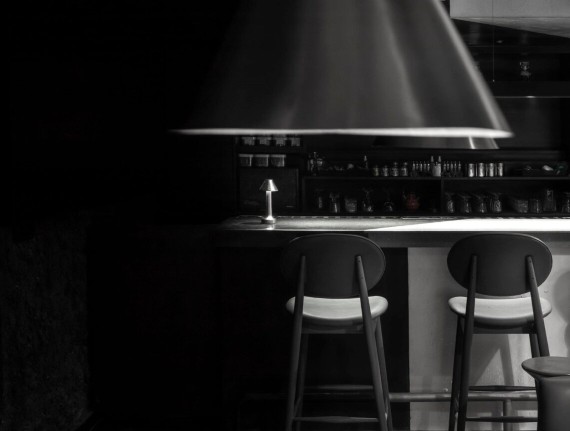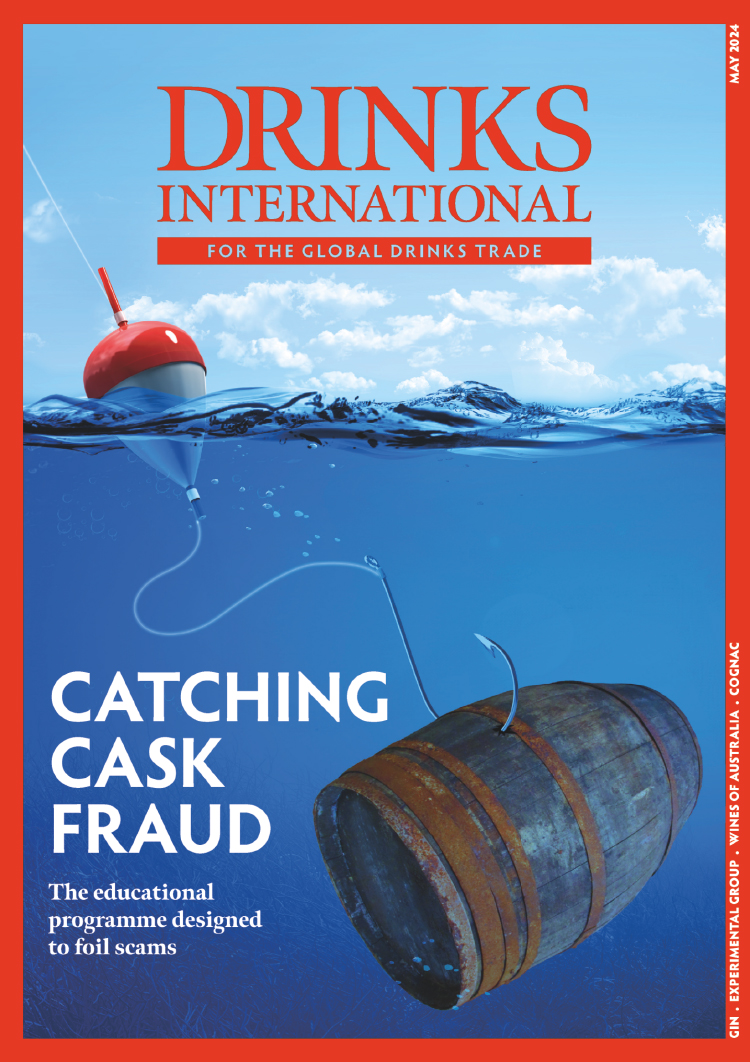India is a country on the move. It’s just become the world’s largest by population and its economy, the fifth largest globally, is growing faster than any of its rivals. It’s young too, with a median age of just 28. All that combined spells a new version of India that has been emerging – younger, internationally aware and with more money in its pocket.
The country’s bar scene is mirroring this change. It’s in a purple patch of growth that can, without hyperbole, be described as a new golden generation. And true to the way modern India operates, it’s a development that has been ushered in almost overnight.
“As recently as 15 years ago, the cocktails that were being made in India were the kind that you’d find in a touristy beach club – they were colourful, full of packaged juices and pretty dated even then,” says Priyanka Blah who, as founder of spirits and cocktail publication The Dram Attic and the region’s academy chair for World’s 50 Best Bars, has been as instrumental in this growth as anyone.
“It began to change about 10 years ago. That’s when we began to hear about things that were happening all over the world. When World Class came to India, it brought with it bartenders from all over the world who would come for the finals. That gave local bartenders the opportunity to see first hand the work that people were doing outside of India. Instagram wasn’t big back then, so these human interactions that World Class provided allowed local bartenders to see what was happening in London, for example. And since then, we’ve come a very long way, the transformation has been quite remarkable.”
That transformation had its roots in the pandemic lockdowns that forced the brakes on an industry that was moving at such pace it had no opportunity to assess and grow. As the country and its bars emerged from restrictions, the bar industry that was reopening its doors was markedly different to the one that was forced to close them. “Just from a bartending point of view, the pandemic had a massive impact,” says Rajiv Mukherjee, head bartender at ZLB23 in Bengaluru.
“We weren’t able to work, so after watching everything on Netflix, a bunch of bartenders spent a lot of time reading and on Youtube learning about infusions, fermentation, batching, clarification, all of these techniques, so that when we were able to start working again and putting what we’d learnt into practice the results were impressive. It was a major change in Indian bartending.”
Cocktail appreciation
And it wasn’t just the bartenders who had spent their time levelling up, consumers, having become accustomed to making their own drinks, had found a deeper appreciation for cocktails. “When the lockdowns were happening, and when bars were closed, a lot of people had to make do with what they had at home,” says Blah.
“So, there was a lot of content that was being created among bartenders around how to drink better at home. Then, when things opened up again, those people started to seek those cocktail experiences at bars, better equipped and informed with two years of cocktail insight gathered over lockdown.”
That change in consumers’ relationship to their own drinking also extended to the venues that people want to spend their evenings in.
“During Covid, crowded areas became places that you didn't want to visit,” says Yash Bhanage, founder of The Bombay Canteen in Mumbai, which in 2023 ranked number 35 in Asia’s 50 Best Bars.
“Now, post-Covid I think people still love to just go sit at a bar, talk to a friend and get a really nice drink. In Mumbai, you’ve seen now bartenders sharpening their knives, getting better at what they do because the demand for good cocktails has come in. And, at the same time, India has seen its own economy boom. More and more people have travelled the world, especially to Southeast Asia, they’ve had great cocktails and want to come back to their city and have similar cocktails.”
Travel has always been hugely important to the progression of food and drink cultures. What would dinner in Ireland be without the potatoes brought to Europe from expeditions to South America? Or in Italian espresso without coffee from Ethiopia? Intercultural dissemination of ideas about flavour, ingredients and technique are found on almost every plate and in almost every glass and that’s never been truer.
According to a report by booking.com and McKinsey, in the year before the pandemic Indians made 26.9 million overseas trips, that number is expected to increase to 50 million by 2030.
“Bartenders are travelling more and being able to visit bars in Singapore, Tokyo and Barcelona to see how these great bars are doing things, but also my friends who aren’t bartenders but maybe work for a software company or something, they’re travelling so much more,” says Mukherjee.
“Compared to five years ago, there are so many more people travelling abroad and if my friends travel to Singapore, for example, they want to visit Atlas, or Sago House, or these bars that they’ve heard about or seen online, and so they have a better knowledge about cocktails.”
Fresh perspectives
The benefit of travel can’t be understated for a healthy bar industry. Not only does it open up the creative mind to fresh perspectives and new flavours, but it also serves to recontextualise the familiar. That’s a concept that is apparent in many of the new wave of Indian bars, but perhaps nowhere more than in Mumbai’s Ekaa where a modern focus on technique meets an ancient understanding of ingredients.
“We’re very ingredient focused,” says the bar’s head bartender Jishnu AJ.
“Our cocktail menu is inspired by the different types of ecosystems in India. We have seven main ecosystems, like oceans, freshwater, tropical forest, desert, grassland, mountains, and my research began almost a year ago visiting different parts of India and finding unique ingredients. That’s why I chose to base the menu around the concept of ayurveda. It’s a concept that dates back almost 6000 years in India all about plant-based medicines.
“When I was young and had a fever, my grandma would go into the garden and take a specific leaf and make a medicine for me, so I have these childhood memories of these plant-based treatments and this knowledge is slowly vanishing in India. This menu isn’t about the health benefits, but it’s about showcasing these special ingredients and the knowledge that we have in India.”
One thing that isn’t working in the favour of India’s new golden age of bartending is an old enemy: the taxman. In India, the laws that regulate the sale and consumption of alcohol are decided by each individual state and vary significantly. For example, in Karnataka, the state which is home to Bengaluru, there is an 83% tax placed on the price of liquor, making bar operations costly.
“In Bangalore, suddenly there’ll be no vermouth for like three months and at one point, there was no Campari,” says Blah. “Every year, when Delhi renews its excise policy, there’s no alcohol for three months, so bars have to anticipate their volumes for three months and stock up because they don’t know if they’ll have stock in December.”
There’s a piece of conventional wisdom that where there are limitations, creativity can flourish, but at a certain point it can be difficult to operate without resources.
“I think it’s all well and good to see that adversity makes you more creative, but I think there’s a limit and this is more of an inhibitor than it is a blessing,” she continues.
“If you remove these limitations, or at least ease them a bit, we could be doing a lot more. We’d have better budgets for bars and bars would be able to properly scale what they’re doing. They’d have more money to travel, to spend on activations and get their name out.”
The legislative restraints are an elephant in the room when talking about the growth of Indian bars. Restrictions force bar operators to be agile but too many can be stifling. But even in the face of those challenges, the industry has never been more on the rise.
“I don’t see why the bar industry shouldn’t be huge in India,” argues Jairaj Singh Solanki, co-founder of Lair in New Delhi. “There’s so much young talent emerging from universities, and there’s a lot of exposure from abroad – people who have lived abroad or travel abroad, who are bringing new ideas back home.
“The next five years will be very exciting for India, I can see it becoming the fastest moving cocktail space in the world. In a country with 1.5 billion people, you can’t just have five or six great bars – we need 50 or 70 bars, and that growth is now happening.
“I think what we lacked before was that everyone was working with so much momentum that no one had time to pause and think what was really required, Covid allowed that to happen. Now, the consumers in India want better quality at an affordable price, and F&B entrepreneurs are delivering that.”
From small seeds grow mighty trees and that’s especially true in a country as young, ambitious and populous as India. While it may have taken a while to spring into life, now the ball is rolling, it’s going to be almost impossible to slow it down.
The only thing holding India back from becoming the next bartending superpower may well be its own government and its prohibitive alcohol laws, but even with that stacked against them, India’s bar operators are giving the country plenty to shout about.




